San Antonio Economic Indicators

| San Antonio economy dashboard (August 2025) | |||
| Job growth (annualized) May–Aug. '25 |
Unemployment rate |
Avg. hourly earnings |
Avg. hourly earnings growth y/y |
| 4.1% | 4.1% | $31.72 | 6.6% |
San Antonio payrolls grew, and the unemployment rate increased in August. Wages registered a strong annual increase. Sales tax revenue in San Antonio rose faster than Texas sales tax revenue. Median home prices declined while inventories were flat.
Business-cycle index
The San Antonio Business-Cycle Index, a gauge of economic conditions in the metro area, increased an annualized 8.1 percent in August (Chart 1).
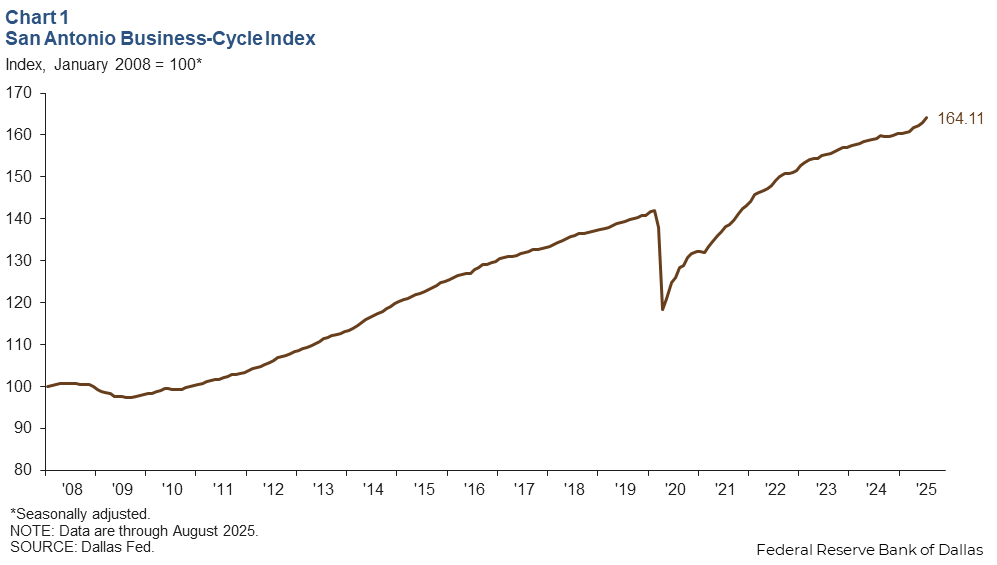
Labor market
Employment growth continues
San Antonio payrolls rose in August, growing an annualized 4.1 percent. San Antonio payrolls grew 3.0 percent year to date (Chart 2). Payrolls grew 4.1 percent (12,100 jobs) from May through August, led by gains in educational and health services (8.7 percent, or 3,900 jobs), government (8.1 percent, or 3,800 jobs) and leisure and hospitality (5.2 percent, or 1,900 jobs). Over the same period, the natural resources and mining, federal government, professional and business services, and financial activities sectors lost jobs. Year over year, total nonfarm employment growth in San Antonio was 2.0 percent, faster than Texas (1.3 percent) and the U.S. (0.9 percent).
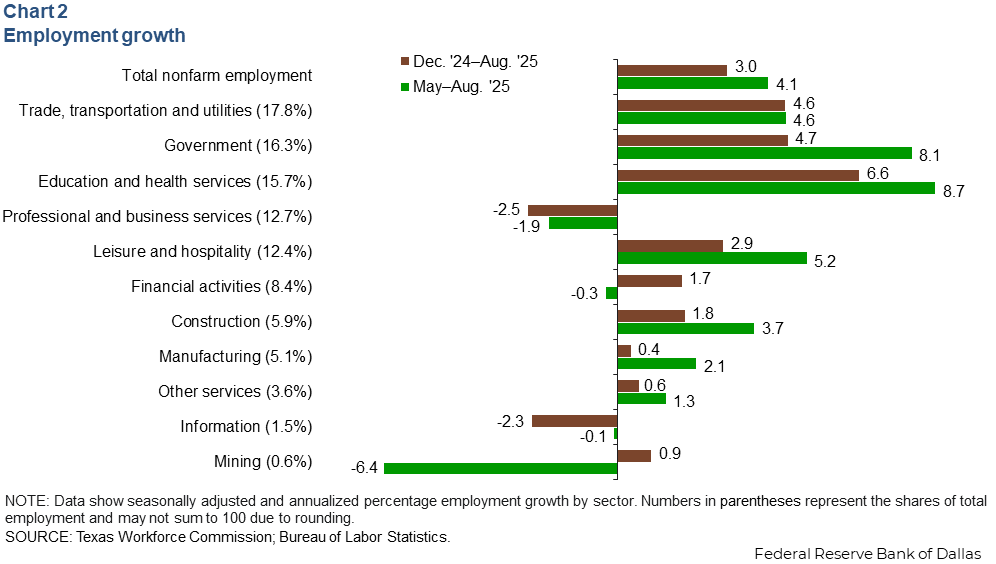
Unemployment rate increases
The San Antonio unemployment rate increased to 4.1 percent in August (Chart 3). The jobless rate is the same in Texas (4.1 percent) but lower than the U.S. (4.3 percent).
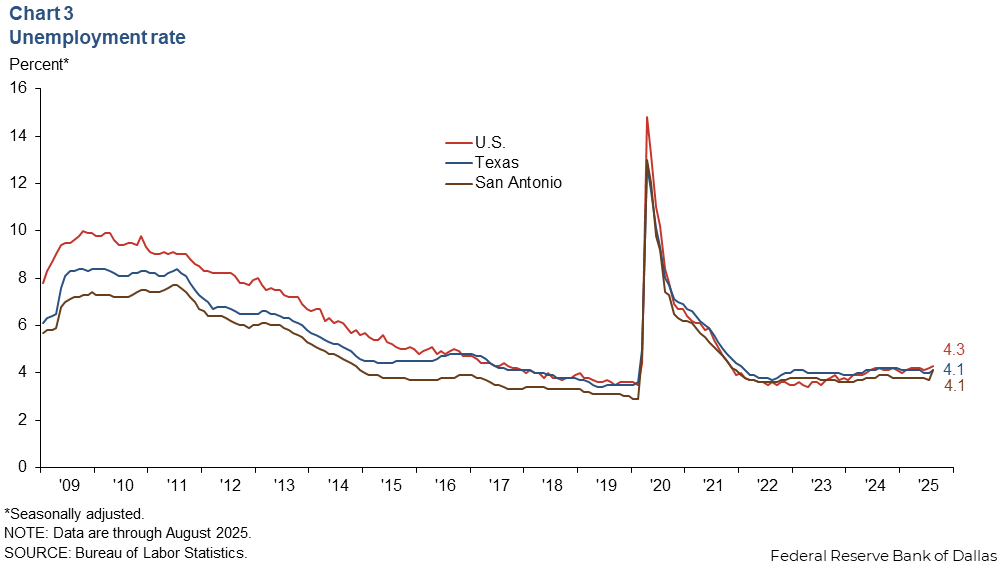
Wages record strong annual increase
The average nominal hourly wage in San Antonio remained at $31.72 in August (Chart 4). Wages are seasonally adjusted and smoothed with a three-month moving average. Year over year, wages grew a strong 6.6 percent in August, while wages in Texas rose 4.0 percent and increased 3.8 percent in the nation. Earnings in San Antonio continue to be lower than both the state ($34.47) and nation ($36.42).
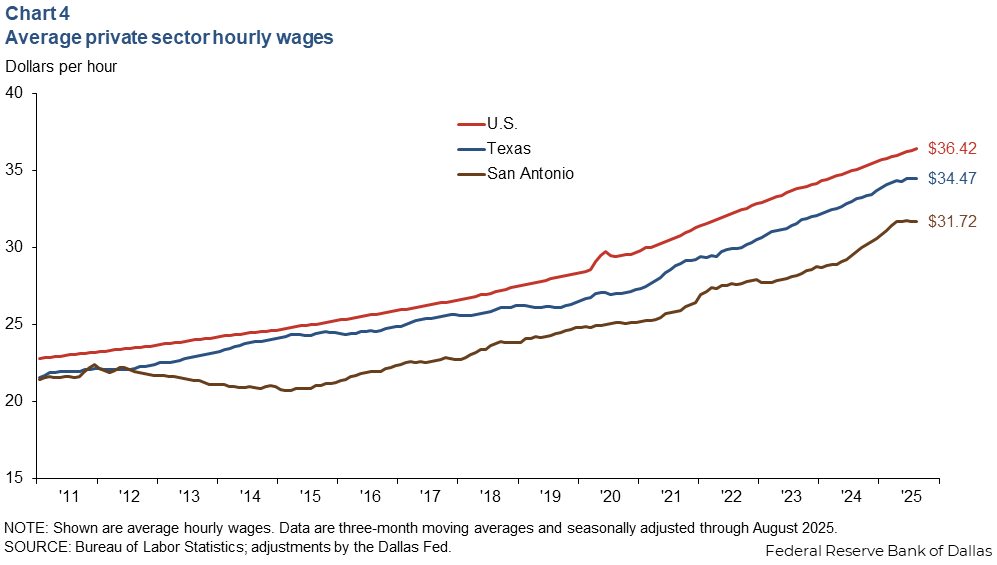
Consumer spending
Sales tax receipts are a proxy for consumer spending patterns. San Antonio sales tax revenue, smoothed and adjusted for inflation, increased 5.4 percent in August 2025 from August 2024, while Texas’ receipts rose 3.8 percent (Chart 5).
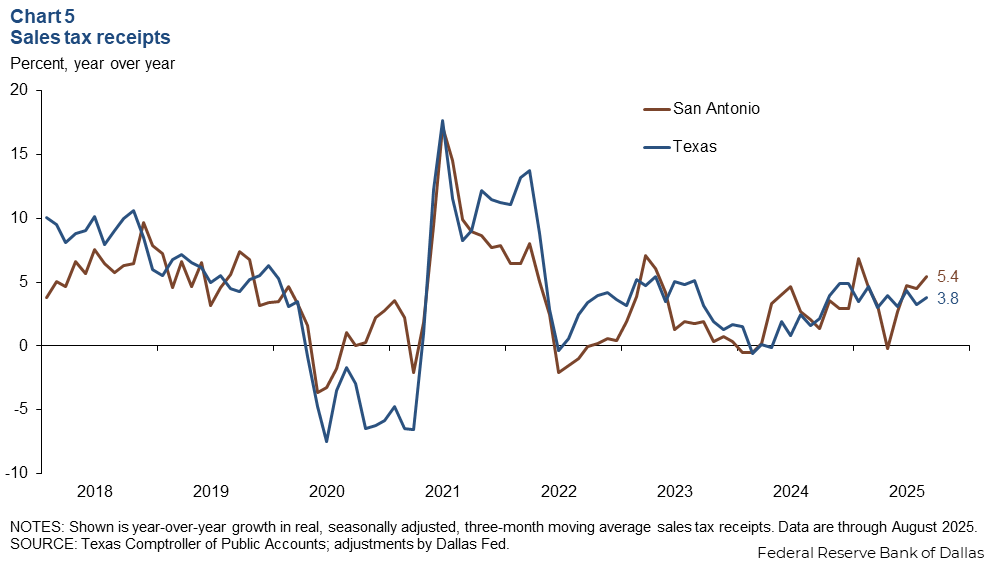
Housing Market
The supply of existing homes for sale in San Antonio was unchanged at 5.6 months in August, slightly greater than the state’s 5.2 months of supply (Chart 6). Since October 2012, inventories have remained below six months, which is generally considered a balanced housing market. Median home prices in San Antonio declined 0.6 percent in August but were up 2.4 percent year over year. Home prices in Texas ticked up 0.1 percent in July but were down 0.9 percent year over year.
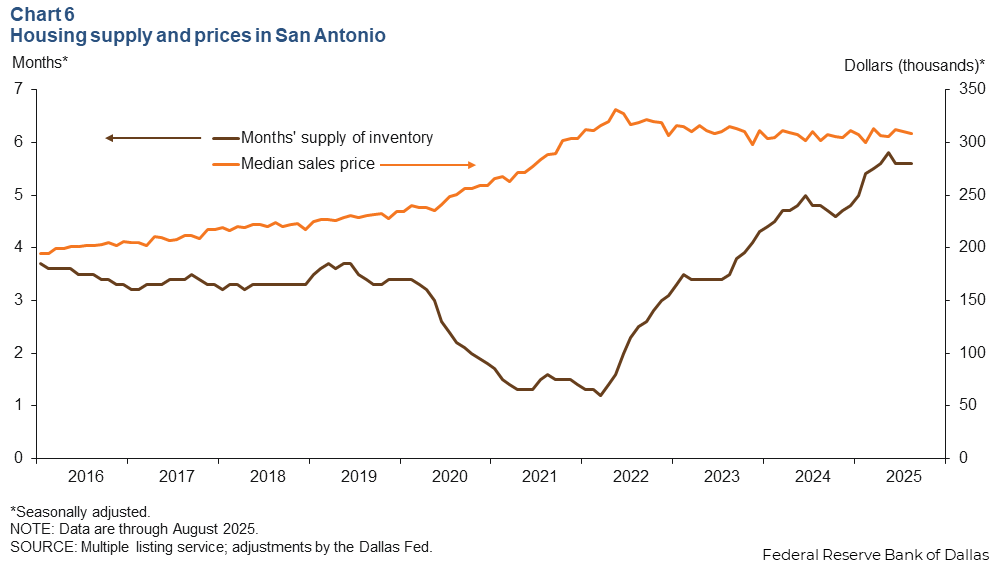
NOTE: Data may not match previously published numbers due to revisions.
About San Antonio Economic Indicators
Questions or suggestions can be addressed to Dylan Council at dylan.council@dal.frb.org. San Antonio Economic Indicators is published every month during the week after state and metro employment data are released.